Service Manual
619FB/538FR
High---W all Ductles s Split System
Sizes 009 to 018
TABLE OF CONTENTS
PAGE
SAFETY CONSIDERATIONS 1.........................
INTRODUCTION 1...................................
MODEL / SERIAL NUMBER NOMENCLATURE 2.........
STANDARD FEATURES AND ACCESSORIES 3...........
SPECIFICATIONS 4...................................
DIMENSIONS 5......................................
CLEARANCES 7.....................................
ELECTRICAL DATA 7................................
WIRING 8...........................................
CONNECTION DIAGRAM 8...........................
WIRING DIAGRAMS 9................................
REFRIGERATION SYSTEM DIAGRAM 12...............
REFRIGERANT LINES 13.............................
CONTROL S YSTEM 14...............................
SYSTEM SAFETIES 14................................
SEQUENCE OF OPERATION 15........................
MODES OF OPERATION 15............................
TROUBLESHOOTING 18..............................
SAFETY CONSIDERATIONS
Installing, starting up, and servicing air--conditioning equipment
can be hazardous due to system pressures, electrical components,
and equipment location (roofs, elevated structures, etc.).
Only trained, qualified installers and service mechanics should
install, start--up, and service this equipment.
Untrained personnel can perform basic maintenance functions such
as cleaning coils. All other operations should be performed by
trained service personnel.
When working on the equipment, observe precautions in the literature
and on tags, stickers, and labels attached to the equipment.
Follow all safety codes. Wear safety glasses and work gloves. Keep
a quenching cloth and fire extinguisher nearby when brazing. Use
care in handling, rigging, and setting bulky equipment.
Read t hi s manua l thoroughl y and foll ow al l war ni ngs or caut i ons
included in literature and attached to the unit. Consult local building
codes and Nat i onal Electrica l Code (NEC) for speci a l re quirements.
Recognize s afety inf orma tion. This is the safe t y--al er t s ymbol
!
!
.
Whe n you se e thi s symbol on the unit and in ins t ruc t ions or manua ls,
be a l ert to the pote ntial for per sona l inj ury. Unde rsta nd thes e s igna l
words: DANGER, WARNING, and CAUTION. These words ar e
use d wit h the saf e t y--al e rt symbol. DANGER identi f i e s the most
serious hazards which will result in se ver e per sona l i njury or deat h.
WARNING signifies hazards which could r esult in persona l inj ur y or
death. CAUTION is used to identify unsafe practices which may
res ul t in minor per sona l inj ur y or product and property damage.
NOTE is used to highl ight sugges tions which will result in enhanced
installation, reliability, or operation.
!
WARNING
ELECTRICAL SHOCK HAZARD
Failure to follow this warning could result in personal
injury or death.
Before installing, modifying, or servicing system, main
electrical disconnect switch must be in the OFF
position. There may be more than 1 disconnect switch.
Lock out and tag switch with a suitable warning label.
EXPLOSION HAZARD
Failure to follow this warning could
result in death, serious personal injury,
and/or property damage.
Never use air or gases containing
oxygen for leak testing or operating
refrigerant compressors. Pressurized
mixtures of air or gases containing
oxygen can lead to an explosion.
!
WARNING
CAUTION
!
EQUIPMENT DAMAGE HAZARD
Failure to follow this caution may result in equipment
damage or improper operation.
Do not bury more than 36 in. (914 mm) of refrigerant pipe
in the ground. If any section of pipe is buried, there must be
a 6 in. (152 mm) vertical rise to the valve connections on
the outdoor units. If more than the recommended length is
buried, refrigerant may migrate to the cooler buried section
during extended periods of system shutdown. This causes
refrigerant slugging and could possibly damage the
compressor at start--up.
INTRODUCTION
This Service Manual provides the necessary information to service,
repair, and maintain the 619FB/538FR family heat pumps. Section
2 of this manual is an appendix with data required to perform
troubleshooting. Use the Table of Contents to locate a desired
topic.
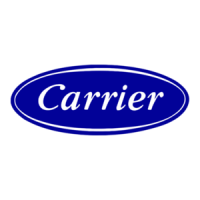
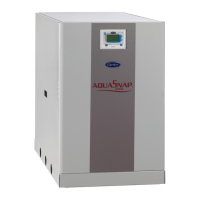



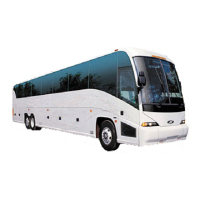


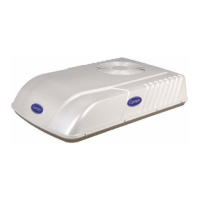
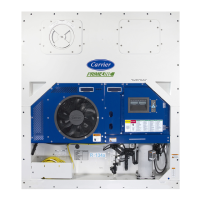
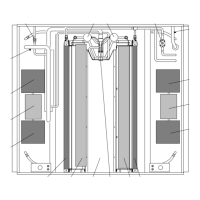

